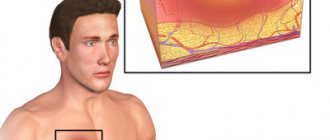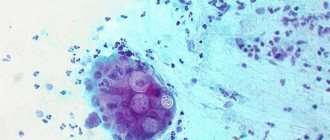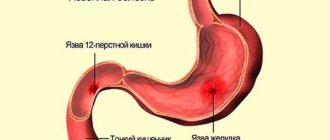When a hepatovirus enters the human body, hepatitis A or Botkin's disease develops. The disease is accompanied by fever, stool instability, and jaundice of the skin. The condition has 3 degrees of severity and is dangerous due to complications such as cholangitis, cholecystitis, and acute hepatic encephalopathy. The disease is also dangerous during pregnancy. At the first symptoms, you should consult a doctor who will diagnose and diagnose, prescribe drug therapy and give preventive recommendations.
Causes, pathogenesis and routes of infection
Viral hepatitis A or Botkin's disease has an ICD code of 10 B15. The causative agent is a virus of the Picornaviridae family. Virology studies the distribution of hepatovirus genotypes and the causes of their occurrence. The pathogenesis is as follows: the microorganism spreads through the bloodstream throughout the body and settles in the liver, affecting hepatocytes - the main structures of the parenchyma. This provokes an inflammatory process. The disease is characterized by seasonality. In the summer, the microbe experiences an active reproduction phase, therefore, given the long incubation period, the peak incidence occurs in autumn and early winter.
Hepatitis A and B viruses are very stable in the external environment and remain infectious at low and high temperatures, and are also resistant to exposure to alcohol or formaldehyde.
The epidemiology of distribution includes countries with warm climates - the disease occurs on the African continent, Eurasia, South and North America. Another cause of the disease is infectious diseases, such as chickenpox, which can cause complications on the liver. The routes of transmission of the hepatitis virus are as follows:
- There is a high probability of infection through water used in everyday life.
drinking contaminated water; - casual sex without the use of barrier contraceptives;
- poor-quality processing of manicure accessories;
- contact with feces of a sick person when caring for him;
- infection during dental procedures;
- infectious donor during blood transfusion;
- weakened immune system;
- addiction;
- eating unwashed fruits and vegetables;
- neglect of personal hygiene rules.
Hepatitis A and B of non-viral etiology in men and women are caused by the following factors:
- poisoning with pesticides;
- uncontrolled use of medications;
- radioactive exposure.
Causes of hepatitis A
The transmission mechanism is fecal-oral. A sick person releases a huge amount of viruses into the environment with feces. They can get into water, food, and household items. If the pathogen gets into the mouth of a healthy person susceptible to infection, hepatitis will develop. You can become infected with hepatitis A in such situations
- Swimming in polluted pools and ponds. The virus enters the mouth with fresh and sea water.
- Eating contaminated foods. These are often berries that have been fertilized with human feces.
- Eating raw shellfish and mussels from contaminated water bodies, where the pathogen can persist for a long time.
- When using poorly purified water. Contaminated water is not only dangerous to drink, but also to use for washing hands and dishes.
- When living together with a sick person, infection occurs through household items (door handles, towels, toys).
- During sexual contact with a patient. This route of transmission is especially common among homosexuals.
- When administering drugs intravenously with a non-sterile syringe. The virus circulates in the blood and is transmitted from one person to another through a needle.
Risk factors for developing hepatitis A
- failure to comply with personal hygiene rules
- staying in crowded places: boarding schools, barracks
- staying in conditions where there is no running water or sewerage: refugee camps, field camps for military personnel
- travel to areas with high incidence rates without prior vaccination
- living with a person with hepatitis A
- lack of access to safe drinking water
Symptoms and course: how does the disease develop?
There are 3 stages of viral hepatitis A - mild, moderate and severe, so the clinical picture is different. The first signs of hepatitis appear 1-1.5 months after infection. When people get sick, skin rashes due to hepatitis in the form of age spots due to intoxication are often observed. Jaundice begins acutely and is manifested by the symptoms shown in the table:
| Form | Symptoms |
| Lightweight | Minor hyperthermia |
| Moderate enlargement of the liver | |
| Nausea | |
| Minor stool upset | |
| Average | Temperature increase |
| Yellowness of the skin and eye sclera | |
| Change in color of urine and stool | |
| Weakness, fatigue | |
| The liver area is painful | |
| Moderate skin itching | |
| Decreased appetite | |
| Heavy | The appearance of hemorrhagic spots |
| Nose bleed | |
| The appearance of a thick yellow coating on the tongue | |
| Enlarged liver and spleen | |
| Lower blood pressure | |
| Temperature increase | |
| Abnormal heart rate (bradycardia) |
Symptoms of hepatitis A
| Symptom | Development mechanism | How it manifests itself externally or during diagnosis |
| The pre-icteric period lasts 3-7 days | ||
| Signs of general intoxication appear at the end of the incubation period | Liver cell breakdown products poison the patient’s body, including the nervous system. | Malaise, fatigue, lethargy, loss of appetite |
| Temperature increase. In the first days of illness in 50% of patients | The immune system's response to the presence of a virus in the blood | Chills, fever, temperature rise to 38-39 |
| The icteric period lasts 2-4 weeks | ||
| Jaundice appears on the 5-10th day from the onset of the disease | The bile pigment, bilirubin, accumulates in the blood. It is a product of the breakdown of red blood cells in the liver. Normally, the pigment binds to blood proteins. But when liver function is impaired, it cannot “send” it into bile, and bilirubin returns to the blood | First, the mucous membrane under the tongue and the sclera of the eyes turn yellow, then the skin acquires a yellow, saffron color. This occurs when the concentration of bilirubin in the blood exceeds 200-400 mg/l. With the appearance of jaundice, the temperature returns to normal. |
| Darkening of urine | Excess bilirubin and urobilin from the blood are excreted through the kidneys in the urine | Urine takes on the color of dark beer and foams |
| Stool discoloration | With hepatitis, the flow of stercobilin with bile into the intestines decreases. It is a pigment from destroyed red blood cells that colors stool. | In the pre-icteric period, stool gradually discolors - it becomes spotted, then becomes completely colorless. |
| Pain in the right hypochondrium | Viruses infect liver cells and cause their death, and edema develops. The liver increases in size and stretches the sensitive capsule | Rubbing sensation, pain and heaviness in the right hypochondrium. The liver is enlarged; when palpated, the patient feels pain |
| Enlarged spleen | Associated with immune response to infection and enhanced clearance of toxins | When palpated, the spleen is enlarged |
| Dyspeptic phenomena | Digestive problems are associated with impaired liver function. Bile stagnates in the gallbladder and does not enter the intestines in sufficient quantities | Nausea, vomiting, heaviness in the stomach, belching, bloating, constipation |
| Pain in muscles and joints | Pain is associated with the accumulation of toxins caused by the death of the virus and liver cells | Body aches, muscle pain |
| Itchy skin | An increase in the level of bile acids in the blood leads to their accumulation in the skin and an allergic reaction. | Dry skin that is accompanied by itching |
| The recovery period lasts from 1 week to six months | ||
| Symptoms gradually subside, liver function is restored | ||
Features during pregnancy
During this period, for a woman, any viral disease is threatening.
The source of infection and symptoms of hepatitis A in women during pregnancy do not differ from those observed in people in general. However, the disease can cause complications in the health of both the expectant mother and the child. For women, this is dangerous due to termination of pregnancy, placental abruption and severe bleeding, which can lead to death. The disease threatens babies with intrauterine hypoxia. However, with timely treatment, complications can be avoided, and the child is born healthy.
How to diagnose
Diagnosis begins with an examination by a doctor and a medical history. In the future, a comprehensive examination is necessary. For this purpose, several types of diagnostics are used.
| Method name | Description |
| General blood analysis | Primary method of diagnosis. Liver infection is characterized by a decrease in hemoglobin and platelets. The level of leukocytes increases. |
| Analysis of urine | Bilirubin is detected. If complications arise, there may be red blood cells in the urine. |
| Coagulogram | Aimed at studying the rate of blood clotting. Decreased clotting indicates possible hepatitis, as well as other liver diseases. |
| Blood chemistry | Allows you to identify the disease in the early stages. There is a high level of bilirubin in the blood. ALT levels may increase even before the first symptoms of hepatitis appear. |
| Enzyme-linked immunosorbent assay (ELISA) | Detection of antibodies to the hepatitis A virus. Diagnostics almost always allows you to accurately confirm or refute the pathology. |
| Polymerase chain reaction (PCR) | Detects pathogen DNA. The analysis is highly effective and allows you to detect infection in the early stages. |
Treatment: which methods are effective?
Drug therapy
Any form of the disease requires hospital treatment. Basic therapy for hepatitis A in adults and treatment principles include standards developed by WHO. Depending on how the severity of the disease is expressed, the medications shown in the table are used to treat hepatitis in the hospital:
| Severity | Pharmgroup | A drug |
| Lightweight | Enterosorbents | "Enterosgel" |
| "Enterodes" | ||
| Hepatoprotectors | "Galstena" | |
| "Gepabene" | ||
| "Essentiale" | ||
| "Gepamertz" | ||
| "Hepatosan" | ||
| Diuretics | "Furosemide" | |
| "Veroshpiron" | ||
| Ethacrynic acid | ||
| Average | Against dehydration | "Regidron" |
| "Hydrovit" | ||
| To remove toxins | Glucose solution | |
| Ringer-Locke solution | ||
| "Albumen" | ||
| "Sorbitol" | ||
| "Reopoliglyukin" | ||
| "Cytochrome C" | ||
| To suppress intestinal microflora | "Nneomycin" | |
| "Kanamycin" | ||
| Heavy | Hormonal corticosteroids | "Prednisolone" |
| "Hydrocortisone" | ||
| Hemostatic | "Vikasol" | |
| H2-histamine receptor blockers | "Cimetidine" | |
| "Ranitidine" | ||
| "Nizatidine" | ||
| "Niperotidine" | ||
| "Lafutidine" | ||
| "Roxatidine" |
Treatment with folk remedies
Alternative methods do not replace traditional therapy, but are used as auxiliary methods that can alleviate the condition and restore the liver.
The healing properties of herbs restore liver function and get rid of the virus.
Treatment of viral hepatitis at home includes the following folk remedy:
- Take 5 g of rose hips and rowan.
- Pour hot water and leave for 15-20 minutes.
- Add 5 g honey.
- Take up to 3 p.m. per day.
The structure of the liver will be restored if you take this folk medicine daily:
- Mix barberry bark, mint, hawthorn, and valerian in equal proportions.
- Pour in hot but not boiling water.
- Let it brew for 24 hours.
- Drink 100 ml before meals 2 times. in a day.
The affected organ is treated and restored using the following remedy:
- Mix 5 g each of yarrow, St. John's wort, chicory root and horsetail.
- Pour in 200 ml of hot water.
- Let it brew and filter.
- Take 2 r. per day 20 ml before meals.
Treatment for viral hepatitis A includes a herbal remedy made from horseradish roots. Recipe:
- Take 1 root and grind it into powder.
- Pour 200 ml of hot water and leave for 60 minutes, filter.
- Drink 100 ml 3 times. a day before meals.
https://youtu.be/xlci-iY13So
Diet
Diet is an important stage in the treatment of Botkin's disease. It forms the basis for the treatment of all diseases of the digestive system. The main principle of diet therapy for an illness is its duration - it should be about 3 months from the start of treatment until complete organ regeneration.
The basic rule of nutrition for this disease is the balance of proteins, fats and carbohydrates in a ratio of 1:1:4, which allows you to replenish the body in accordance with the norm of calorie content of food and energy consumption. Meals should be taken in small portions 5-6 times a day. Sufficient heat treatment of food is of great importance in diet therapy.
You should exclude from food harmful foods that negatively affect the functioning of organs - soda, hard-to-digest fats (beef, pork and lamb), processed foods and smoked products.
The basis of diet therapy is the consumption of large amounts of fluid, which should reach at least 3 liters per day in adults and at least 2 liters in children.
What are the complications?
If you get sick and do not treat the disease promptly, viral hepatitis A can cause the following complications:
- Complications often occur in people who already have some kind of liver disease.
Cholangitis. Characterized by inflammation of the bile ducts. The condition is dangerous due to secondary infection, peritonitis, abscess formation, biliary cirrhosis or sclerotic changes in organ tissue. - Cholecystitis. Manifested by inflammation of the gallbladder. The disease is fatal because it causes complications in the form of a purulent inflammatory process or perforation of the gallbladder, sepsis, and the formation of fistulas.
- Hepatic encephalopathy. Develops as a result of liver failure and affects the central nervous system. It is characterized by a severe course in the form of lethargy, psycho-emotional disorders, twitching of the limbs, and pathological drowsiness.
- Liver cancer. The hepatitis virus negatively affects the cells of the organ, resulting in their degeneration. Depending on the type of cancer, the disease can develop rapidly and result in death.
Consequences of hepatitis A
Complications are not typical for hepatitis A. Consequences occur in only 2% of cases. At risk are people who violate their diet, do not follow doctor’s prescriptions, abuse alcohol, or suffer from liver pathology. The most common complications of hepatitis A
- Biliary dyskinesia is a violation of the motility of the biliary tract, resulting in stagnation of bile. Symptoms: pain in the right hypochondrium, radiating to the right shoulder, occurs after eating and physical activity. Bitterness in the mouth, nausea, vomiting, bad breath.
- Cholecystitis is an inflammation of the walls of the gallbladder, accompanied by stagnation of bile. Symptoms: sharp pain in the right hypochondrium, radiating to the right side of the lower back and neck. They get worse when moving, coughing, or changing body position. The right half of the abdominal wall is tense. Jaundice, itching, nausea, and vomiting are possible. In chronic acalculous cholecystitis, dull aching pain occurs in the right half of the abdomen after eating.
- Chronic pancreatitis is chronic inflammation of the pancreas. Symptoms: pain in the stomach and left hypochondrium, pain can be constant or periodic, radiates to the back, heart, and often has a girdling character. The disease is accompanied by diarrhea, nausea and can cause diabetes.
Prevention
Primary preventive measures include maintaining hygiene. Nonspecific prevention of viral hepatitis A includes boiling and thoroughly cleaning drinking water, disinfecting dishes, clothes and bedding of the patient, through which the virus is transmitted. It is recommended to pour boiling water over fruits and vegetables before consumption, and cook seafood in compliance with technological rules. It is necessary to isolate patients and treat them, the basic standard and criteria of which were developed by WHO. If a person has communicated with a patient who has a viral etiology of the disease, immunoglobulin preparations will help protect against hepatitis. Specific prevention of hepatitis A involves timely vaccination. This is a warning not only of a dangerous disease, but also of the development of serious consequences.
https://youtu.be/7hJMdJSS_VU
The causative agent of HCV
The causative agent of hepatitis C is a flavavirus with the following distinctive features:
- Genetic heterogeneity. There are different genotypes and quasitypes of the pathogen;
- The viability of the pathogen in an open environment is from 12 to 96 hours;
- The pathogen is persistent;
- Tendency to intensive mutation, which is why researchers for many years could not find a suitable therapy for HCV.
The causative agent of viral liver inflammation has not yet been thoroughly studied.
The first signs of the disease
The incubation period does not reveal itself at all. This, from an epidemiological point of view, is the most dangerous period, since at the end of it a person is already infectious to others, but he still does not know about it. Therefore, hepatitis A is considered dangerous.
The next stage in the development of the disease is prodromal. A person is contagious throughout his entire life.
Manifestations of the prodromal period of hepatitis A are as follows:
- the disease begins acutely with an increase in body temperature to 38–40 °C, which is observed for at least three days;
- The first signs of hepatitis A include redness of the throat, headaches, and mild nasal congestion;
- nausea, loss of appetite, vomiting is possible, but in rare cases;
- perhaps the appearance of pain in the stomach or a feeling of discomfort;
- after about two days, the urine becomes dark in color, many draw an analogy with the color of dark beer or strong tea, the feces become discolored and become liquid;
- It is during this period of hepatitis A that the liver and spleen enlarge and become painful on palpation.
At the very beginning, the prodrome period resembles a respiratory infection, and only at the end, before its peak, its symptoms become more understandable.
Is immunity formed?
Currently, post-infectious immunity has not been sufficiently studied. It is believed that protective immunity to the pathogen is not formed. After successful treatment, the patient can become infected again with the same or a different genotype.
An infectious disease provokes dangerous complications. Replication (multiplication) of HCV leads to necrosis of liver cells and their replacement with connective tissue. Subsequently, fibrosis gives way to cirrhosis. Hepatitis C is prone to chronicity and malignancy (in 5-6% of cases of confirmed hepatitis).
The situation is especially difficult for HIV-infected people. The pathogen can be defeated with the help of modern medications; the replication of the virus is restrained only by constant use of antiretroviral drugs. Against the background of HIV infection, complications of hepatitis develop rapidly. In a healthy person, from the moment of infection to the formation of carcinoma, an average of 20-30 years pass, in a person with HIV infection - only 10-15 years.
Diagnosis and treatment
https://youtu.be/PWSbd2EqGao
All persons suspected of hepatitis A are subject to separation from the team for 35 days (usually at home), but are hospitalized in infectious diseases departments only in case of severe disease (indications are determined only by a doctor during direct examination). The diagnosis is made based on the presence of the virus in the patient’s stool; serological diagnosis is also carried out (search for antibodies, or protective specific proteins, to a specific virus or group of viruses). Treatment is carried out according to clinical recommendations; great attention is paid to diet in the treatment of hepatitis A.
Vaccinations are subject to
- All children from 3 years of age. If the vaccination schedule is violated, the child should be vaccinated before entering school.
- Persons at risk: health workers, educators and teachers of child care institutions, catering workers, food sellers, water supply and sewerage workers, military personnel and people traveling for work or on vacation to places unfavorable for intestinal infections, including hepatitis A.
https://youtu.be/9j2OP880jKo
Stages of development of viral hepatitis A
There are several variants of the course of hepatitis A. The disease can occur with a typical clinical picture and be asymptomatic.
In the case of manifest (proceeding with vivid symptoms) forms, several stages are distinguished in the development of the disease.
- The incubation period of viral hepatitis A begins from the moment the pathogen enters the human body until the initial manifestations. It can last from 1 to 7 weeks, but on average it is 21–28 days.
- The prodromal period lasts about 7 days, sometimes three weeks. It resembles the onset of a viral upper respiratory tract disease.
- The height of the disease or the period of familiar typical clinical manifestations lasts about two or three weeks, but in special cases it reaches two months.
- Convalescence or recovery.
After infection, persistent lifelong immunity is formed. Is it possible to get hepatitis A again? This is impossible; after suffering from the disease, the body produces cells that protect against re-infection.
How is hepatitis C transmitted? Ways of transmission of the disease
You can become infected with this disease if the blood of an infected person somehow enters the body of a healthy person. This can happen if:
- a person uses a disposable syringe several times (when using drugs that are injected into the veins)
- If the mother is sick during childbirth, she transmits the virus to the child through the birth canal
- through cosmetic, medical and surgical instruments that do not receive proper treatment
- through unprotected and sometimes protected sexual intercourse
- in everyday life, if the patient’s blood enters the mucous membrane of a healthy person
hepatitis C, hepatitis C virus, how does the disease progress?
Features of hepatitis B
This type of hepatitis is also called serum hepatitis. In this case, severe liver damage occurs. The disease is transmitted by the DNA-containing hepatitis virus. Examples of infection with this form often result in cirrhosis and liver cancer. The shell of this virus contains an antigen that provokes the formation of antibodies to it. These specific antibodies can be detected in blood serum. The virus is extremely resistant to various temperature changes; it dies if only boiled for 20 minutes. That is why it is extremely common in nature.
Treatment requires an integrated approach. The treatment regimen includes hepatoprotectors, hormones, antibiotics and drugs that support the immune system.
This hepatitis pathogen is transmitted through blood. Infection can occur through sexual contact, blood transfusion or other medical procedures. The fetus can become infected from the mother.
This form of the disease is manifested by fever, vomiting and nausea, and joint pain. The stool may become discolored and the urine may become dark in color. Jaundice in this case is uncommon. Rashes may appear on the body, and upon examination one can see that the liver and spleen are enlarged. A person can carry the virus within themselves for 6 months and not realize it.











